Tummy Tuck (Abdominoplasty)
Desire for an abdominoplasty to improve the appearance of the abdominal wall is a common concern.
Anomalies of the abdominal wall can result from many varied experiences. Weight fluctuations throughout life can lead to excess skin that will not go away with diet or exercise. Pregnancy can lead to excess skin. It can also cause a weakness of the abdominal wall. This results in a protruding abdomen, which is also recalcitrant to exercise. Prior abdominal surgery or trauma can result in scars and contour irregularities that can only be corrected with surgery. Endogenous and exogenous hormones and medications can affect our body contours. These effects may be permanent and only corrected with body contouring surgery. Finally, our own genetics can result in excess skin and fat. Age-related changes can also cause these issues. They require more than diet and exercise to correct.
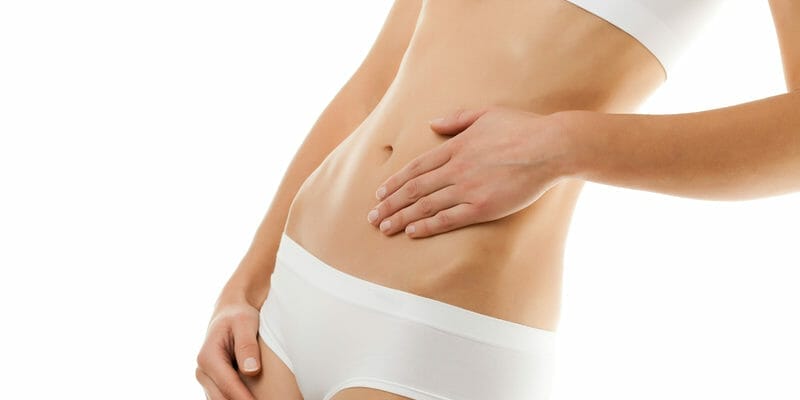
Who Should Consider a Tummy Tuck?
Most individuals who seek a tummy tuck are women. These women have experienced a pregnancy that resulted in excess fat and skin on their abdomens. Women who intend to have more children should wait to have a tummy tuck. Pregnancy can negatively affect the results of their abdominoplasty.
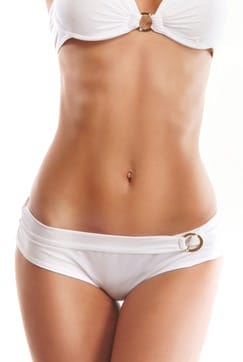
Another major group of patients that inquire about tummy tucks are patients that have lost significant amount of weight. No matter how much exercise is performed, the skin will not contour back down to the underlying abdominal wall.
Patients with a protruding abdomen with excess fat and/or skin are good candidates for this procedure. This condition is resistant to diet and exercise.
Initial Consultation
During the initial consultation, Dr. Thomassen will review your medical history. They will also discuss prior treatments and surgical procedures. Your medications, herbal supplements, vitamins, and allergies will be examined. Lifestyle factors like smoking will also be considered. The goal is to optimize your health status to have a safe procedure with quick recovery and excellent results.
A history of smoking is a significant risk factor for wound healing. Current recommendations are that patient stop smoking for a minimum of 4-8 weeks prior and after surgery. The use of nicotine patches is not an adequate measure in the perioperative period.

Physical Exam
The physical exam focuses on evaluation of the entire abdomen, umbilicus, mons pubis, flanks and back rolls. Any prior surgeries and the resulting scars need to be considered when planning an abdominoplasty procedure. If an incision seems to disrupt the blood supply to the abdominal wall, a surgical variation is necessary. This ensures proper wound healing. Using liposuction with an abdominoplasty helps address fullness. It is effective for the mons pubis, hips and flanks. It also targets dorsal back rolls.
Evaluation of Skin
The skin quality needs to be assessed as part of the exam. The presence of striae indicates a loss of skin elasticity. This may affect how the surgery is performed. Excess skin is the main indication for an abdominoplasty procedure. The amount of excess needs to be qualified to choose the right procedure for the patient. Patients who have abundance of adipose tissue but do not require skin or muscle treatment, i.e., have a good skin tone. They also have reasonable potential for the skin to contract after removal of substantial volume. They may be better candidates for liposuction alone as opposed to an abdominoplasty procedure.
Evaluation of Abdominal Muscle
The quality of the musculofascial layer is also important to evaluate for any weaknesses. More commonly, patients exhibit a weakness of this fascia termed rectus diastasis. This leads to a bulging abdomen. It can only be fixed by plicating the fascia. The procedure also involves restoring the rectus muscles to their original position. More severe defects of the fascia consist of hernias, particularly umbilical hernias and ventral hernias. These may need to be ruled out and if present, will be corrected at the time of the abdominoplasty.
Evaluation of Abdominal Fat
Intraperitoneal fat is also known as fat inside the abdominal cavity deep to the fascia. It cannot be treated with an abdominoplasty procedure. This fat is only reducible through diet and exercise. If fullness due to intraperitoneal fat is excessive, this may preclude undergoing a successful abdominoplasty.
Preparing for an Abdominoplasty
Prior to a tummy tuck, Dr. Thomassen will most likely request that the patient visit his or her physician. A thorough physical exam and routine blood work will be needed. Patients who are 50 years of age or older may need an electrocardiogram (EKG/ECG). This is required before their tummy tuck procedure.
Certain medications need to be avoided for at least two weeks before surgery and one week after their surgical procedure. These medications include nonsteroidal anti-inflammatory drugs (NSAIDs) like aspirin and ibuprofen. NSAIDs are known to cause bruising and abnormal bleeding.
Anesthesia
The majority of Dr. Thomassen’s patients receive general anesthesia: All anesthesia is administered by a licensed anesthesiologist.
The Abdominoplasty Procedure
The procedure starts by making a low transverse abdominal incision. It extends across the lower abdomen (directly above the pubic area) from hip to hip. Great care is taken to ensure symmetry and a low scar. Through this incision, the muscle wall of the abdomen is tightened. The patient is sat up in the OR table and excess skin is removed. The umbilicus is then transposed and the incision closed.
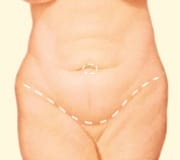
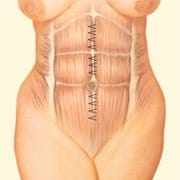
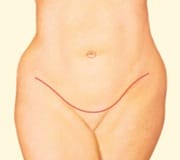
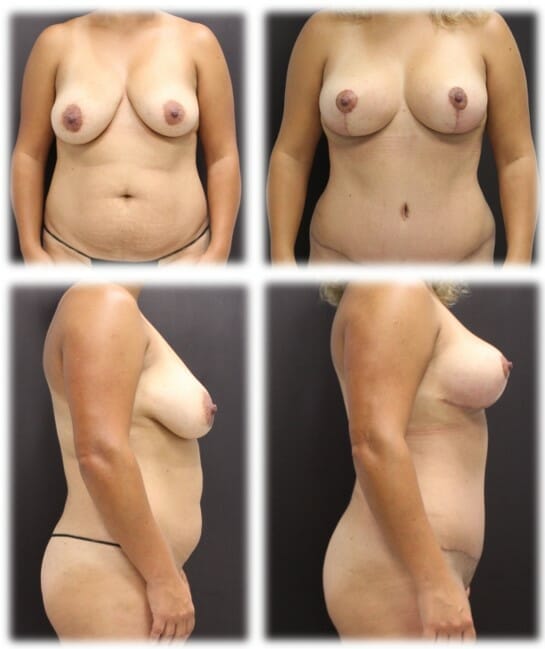
If an individual is also having liposuction, the liposuction procedure is performed first. Usually no additional incisions will need to be made.
A sterile dressing is applied over the incisions. Then, a compression garment is placed to help support the abdominal wall as it heals. Compression garments and abdominal binders also decrease post-operative swelling, which reduces the incidence of bruising.
The procedure takes about 3 hours.
Recovery
Patients will remain in the recovery room for approximately an hour following their abdominoplasty. They can go home the same day with someone to stay with them overnight. A first visit is scheduled for 1-2 days after surgery.
It is important to rest during the first week. Keep your head elevated and bend at the hip. This helps avoid tension on the abdominal wall closure. Also, when walking, it is important to be hunched over for the same reason. A walker is sometimes useful during this first week.
Results
Patients will notice an immediate improvement in the contour of their abdomen. As swelling subsides, the contour of the abdomen will continue to improve.
Patients will wear the compression garment or abdominal binder for approximately 4 weeks after their surgery.
If you are interested in learning more about abdominoplasty and liposuction, or any of the other procedures that Dr. Thomassen performs, please Thomassen Plastic Surgery today.
Get more information about Abdominoplasty at the American Society of Plastic Surgery website.
Videos
Related Posts
Related Links
Share this Post




